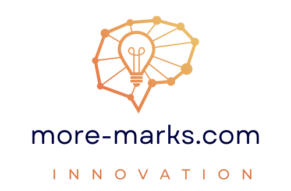How Six Sigma Can Be Used in Education to Improve Quality and Efficiency
Six Sigma is a data-driven methodology originally developed for manufacturing and business environments to improve processes, reduce defects, and enhance customer satisfaction. However, its principles are increasingly being adopted in the field of education to streamline operations, improve academic outcomes, and enhance the student experience.
1. What is Six Sigma?
Six Sigma is a quality management strategy focused on process improvement and defect reduction using statistical tools. It follows a structured methodology, most notably the DMAIC framework: Define, Measure, Analyze, Improve, and Control. Each step helps organizations identify inefficiencies and apply targeted strategies to address them.
2. Why Apply Six Sigma in Education?
Educational institutions, much like businesses, deal with complex systems involving people, processes, and resources. The application of Six Sigma in education can help identify bottlenecks, improve resource allocation, and elevate teaching quality and student outcomes. Whether in school administration or classroom instruction, Six Sigma fosters a culture of continuous improvement.
3. Key Benefits of Six Sigma in Education
- Enhanced Process Efficiency: Streamlines administrative processes like admissions, scheduling, and grading.
- Improved Student Performance: Data-driven teaching approaches improve academic results.
- Resource Optimization: Better use of human and financial resources.
- Higher Satisfaction: Improved experiences for students, parents, and staff.
4. Practical Applications of Six Sigma in Education
- Curriculum Design: Using student feedback and performance data to shape effective curricula.
- Classroom Management: Reducing disruptions and improving instructional delivery.
- Admissions Process: Enhancing speed and accuracy in student admissions.
- Staff Development: Identifying skill gaps and improving training programs.
- Facilities Management: Streamlining maintenance and operations.
5. Implementing DMAIC in Education
The DMAIC cycle can be directly applied to various education processes:
- Define: Identify the problem area (e.g., low student engagement).
- Measure: Collect data on attendance, grades, feedback, etc.
- Analyze: Examine data to uncover root causes.
- Improve: Implement solutions like personalized learning or tech integration.
- Control: Monitor improvements and ensure sustainability.
6. Challenges in Applying Six Sigma in Education
While Six Sigma offers many advantages, challenges include resistance to change, data collection limitations, and the need for proper training among educators and administrators. Overcoming these requires strong leadership and commitment to continuous improvement.
Conclusion
The application of Six Sigma in education can lead to meaningful transformation. From improving academic performance to streamlining administrative processes, it provides a structured, data-driven approach to enhance quality and efficiency. With proper implementation and stakeholder buy-in, educational institutions can harness Six Sigma to create more effective and engaging learning environments.



